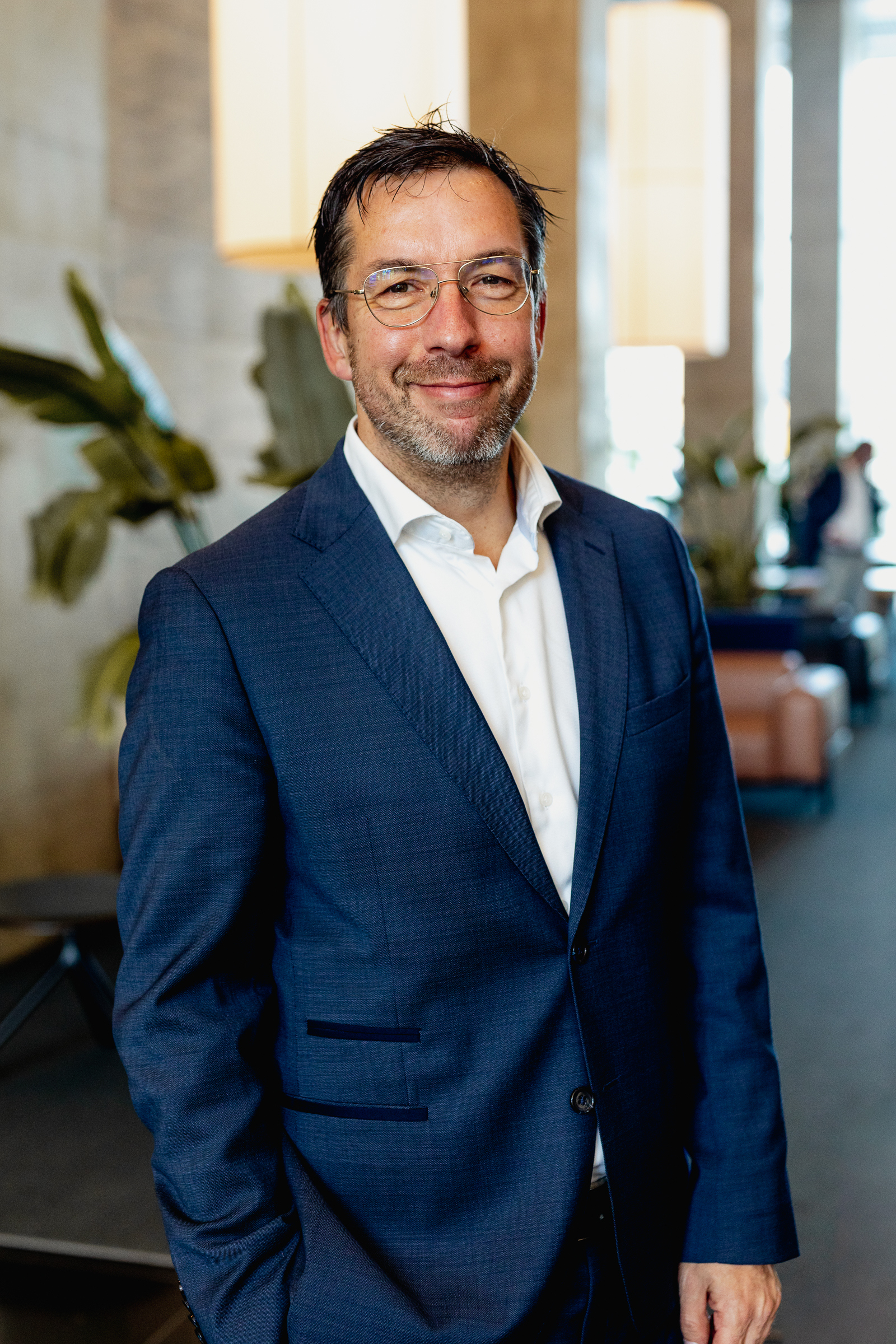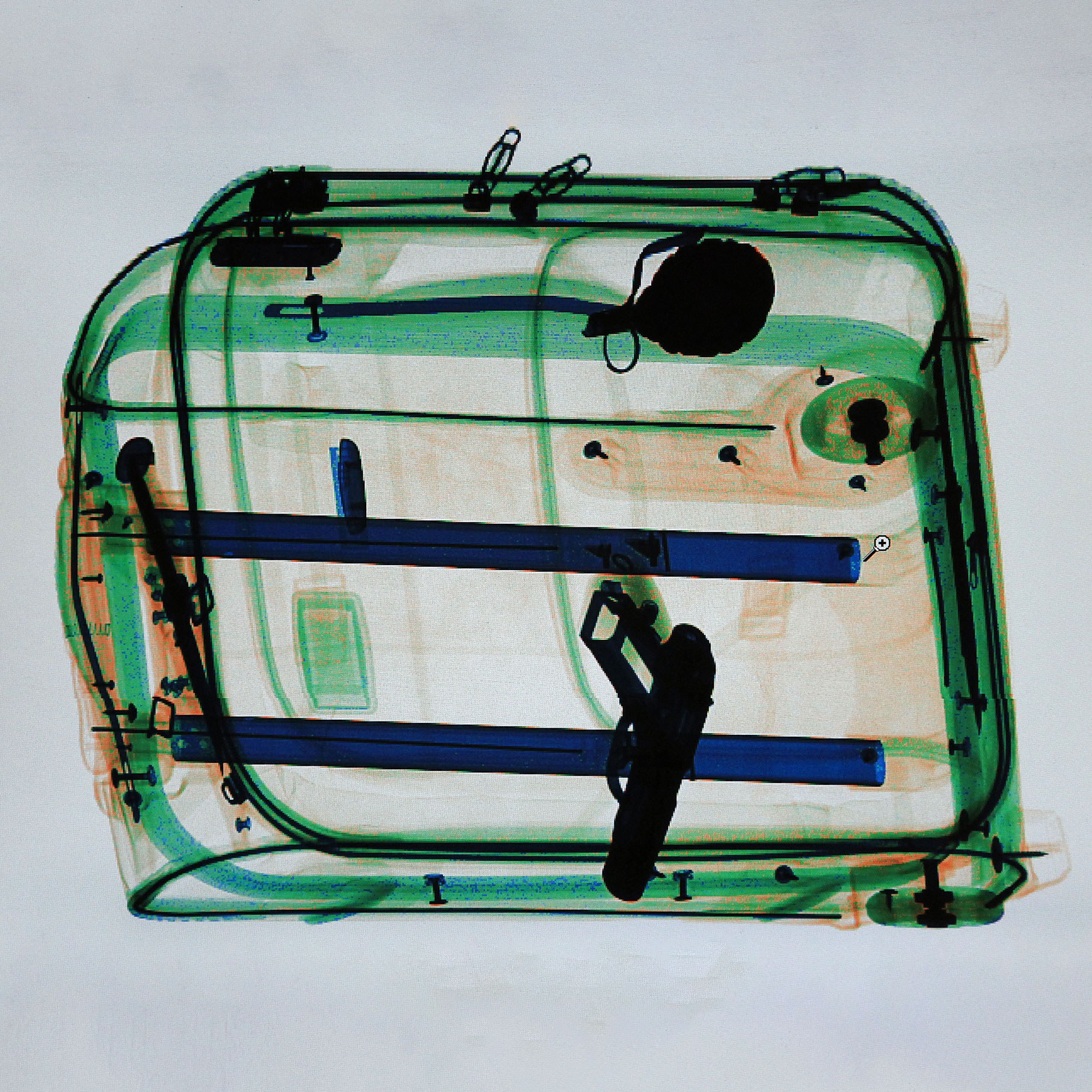29/11/2021 - Blog post
"We're already working on one-stop security."
The airliners.de series "Aviation Security" on current challenges and future solutions for aviation security. In part 5, they talk to NUCTECH, a leading manufacturer of security equipment of security equipment about the lengthy certifications for devices and clarify how far technology has come when it comes to artificial intelligence.

Robert Bos is Deputy Managing Director of Nuctech Netherlands B.V. - a subsidiary of Nuctech, a global manufacturer of safety equipment. He is responsible for business development, sales, tenders and certification in Europe.
airliners.de:
Does Germany differ from other countries when it comes to selecting aviation security technology?
Robert Bos: Aviation security is highly regulated all over the world. Every country in the EU has its own regulations in addition to the EU guidelines. This often involves how aviation security is coordinated locally. Here, there are often differences in responsibilities and approval procedures. One example: Here in Amsterdam, the first the first new CT (computed tomography) scanners for hand for hand luggage. This allows passengers to leave their laptops and liquids in their hand luggage during security checks. hand luggage during security checks. Outside Europe, this technology has been in use for a long time; in Germany, testing is generally very thorough. The Netherlands was far from being the first to use CT scanners. In the U.S., the TSA has its own rules, and in China it's different again. Ultimately all want to ensure that travel is safe and are building a legal framework to do so.
How exactly does the approval of new products work?
In Europe, there are the ECAC CEP procedures and respective national companies that test and certify here. In Germany, for example, the Fraunhofer Institute is responsible for this. The products must then be tested and meet the specific requirements for the respective for the respective application in order to be certified. We have no influence on the certification process, which means that we offer to have our devices tested by an institute and then we receive the certificate if it is approved. then we get the certificate if a device passes. If not, however, no one will tell you why not. The other way around there is also no information about why one has passed. This is part of the security structure.
If a device is on the ECAC list, the authorities and airports, or whoever is responsible for procurement, can order and use the products. can order and use the products. In Germany, for example, there is still extensive testing by the federal police, before the devices are ordered for the airports. But again, as a manufacturer, we don't know what exactly is being tested. Last but not least Finally, the decision for or against a device is also still about purely operational concerns.
How long does it take for a newly developed device to be available for use at airports?
That varies. As a rule, it takes around three to four years before a new product is approved. There is always a "triangle of challenges" - between safety requirements, regulation and technology. Sometimes the legal framework lags behind the sometimes lag behind the technology.
At the moment, for example, the focus is increasingly on cyber security and we are developing a lot in the direction of AI (artificial intelligence), artificial intelligence). We work with images and want to recognize dangerous things. They look similar, but are perhaps a little differently here and there and in different luggage. But with "Big Data" there is machine learning and that helps us to detect things automatically. detect things automatically.
If you also link that to the information on the ticket, for example, then completely different conclusions can be drawn can be drawn: Who is flying from where to where, what is usually in such luggage, and so on.
Is data protection the biggest challenge when it comes to AI?
Of course, the topic of data protection is currently the subject of major discussions, and not just in the EU. Regulations are becoming stricter all over the world, which is a good thing. Just think, for example, of the new health requirements such as temperature checks at airports. I'm very curious to see how things develop here, because it's a big issue for our customers, who collect personal data in the course of the checks.
I am sure that we will find solutions so that we can build a more efficient, centralized and at the same time always safe aviation security can be established. Perhaps in the future, passengers will simply be able to choose whether they want to disclose their data for this purpose or not. or not, preferring instead to go through a more lengthy security process. But that's just my personal view of things.
How does aviation security actually differ from other industries you supply?
Many other sectors are not certified to the same extent as aviation security. This makes the whole thing expensive, of course, and sometimes less flexible. At the same time, the security level in aviation security is extremely high due to the extensive certifications and the many tests. Other industries may benefit from this.
But of course there are also sectors besides aviation that set very high standards themselves. In many cases, the framework conditions there are different from those in aviation security. In customs, for example, centralized approaches have long been used to evaluate a large number of different control points.
In aviation, on the other hand, analysts are usually still sitting right next to a piece of equipment. If there is a holdup in the control lane for some reason or fewer passengers arrive than planned, a highly specialized employee sits right next to the machine and has idle time. Technically, it would be easy to organize this centrally much more efficiently in aviation as well.
Are other industries also further along in terms of pure technology?
You can't say that in such general terms. The requirements often differ, and so do the devices and technologies used. In rehab clinics, for example, you can use very specialized devices to find very specific drugs. In other places, however, a device has to be more universal.
Customs, for example, wants to see if a container contains the things listed on the accompanying paperwork, if only for reasons of import sales tax collection. Finding cigarettes in a truck is different from, say, checking hand luggage at the airport. Here, bombs and weapons have to stand out.
Are the CT scanners you have already mentioned currently the measure of all things in aviation security?
At the moment, it is actually the CT scanners for hand luggage that are supposed to speed up processes at airports everywhere. With these "category 3" devices, liquids and other items can be kept at the check lanes in carry-on luggage. CT technology has its origins in medicine, has also long been used at airports when scanning checked bags, and has now been specifically enhanced for use at carry-on baggage checkpoints. The devices have become smaller, for example. In the cargo sector, it's the other way around, with CT devices getting bigger and bigger.
Is cargo a particularly challenging field for security equipment manufacturers?
We work every day to improve security in cargo handling and are doing very well. That's important, because air freight must of course be just as secure as passengers' baggage and carry-on luggage. After all, air freight flies in the lower deck.
But freight has its own challenges, starting with the size of the cargo. That's why completely different measures are sometimes used here, such as dogs. And there's the secure supply chain. But there are also always new technical possibilities for freight, such as with very large CT scanners, which can provide a much better view of freight items.
How long will it take for CT scanners to be in use across the board?
The equipment is here now and it is slowly but surely coming into use at more and more airports in Europe. Corona is perhaps delaying investment in CT technologies a little because the equipment is comparatively expensive and the current lower passenger numbers have taken some of the pressure off to invest in speed. But in two or three years, at least at the larger airports, there will be CT scanners at the hand luggage checks everywhere, I am convinced of that.
The security requirements for carry-on baggage will also continue to increase, and at some point this will no longer be possible with conventional systems. Despite increasingly sophisticated software, dual-view systems are simply reaching their limits.
What distinguishes CT devices from conventional devices?
Currently, a lot of work is being done with single- and dual-view technology and special software for hand baggage screening. This makes a lot of things possible, even though you only capture side views. But CT technology is much more accurate. It gives you a true, three-dimensional image and you can rotate objects back and forth in all directions for inspection.
The more data allows, for example, better and therefore faster determination of materials. This speeds up inspections and leads to fewer manual rechecks. In addition, of course, many items, such as liquids, no longer have to be placed individually on the belt by passengers. Ultimately, however, the investment in the CT equipment has to be worthwhile on site - that's a business case.
How much more expensive is a CT scanner compared to conventional equipment?
That's hard to quantify, because it's always a complex set of options that is used depending on the needs at each control lane. But I think it's fair to say that a modern CT control lane is something like four to six times more expensive than a conventional one. In terms of cars, it's more like a very, very exclusive sports car compared to a very good luxury car. But here, too, there are different options, which ultimately mean big differences in price.
Finally, let's take a look at the more distant future. What comes after CT scanners?
For example, we are already working on "one-stop security" for passengers at airports. Even if you're traveling alone, today you often need four tubs to have all your stuff scanned. With CT, it might be two more, but you still have to stand in line and wait.
The idea for reorganization is to have a centralized drop-off point for carry-on baggage. There will then be no more backlog if a piece of luggage causes problems in front of you. Everything would run in the background, and passengers would simply pick up their carry-on baggage after the body scanner at a central drop-off point, perhaps even at the gate again, if they so desire.
In addition to new legal framework conditions, we naturally also need a completely new look at system architecture, data security and AI. Many questions are still unanswered in this regard, but that will be the future.
And when will "no-stop security" become a reality, where passengers simply walk down an aisle and are scanned?
I think that will really come at some point. At any rate, it certainly won't fail because of the technology.
Mr. Bos, thank you very much for talking to us.
This article was originally Published on: https://www.airliners.de/lufts...

